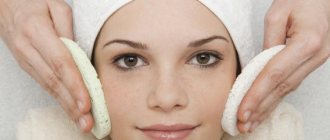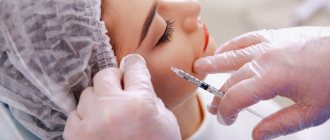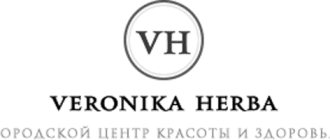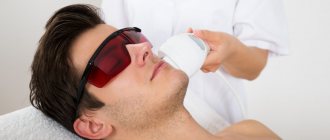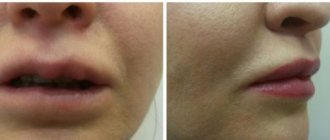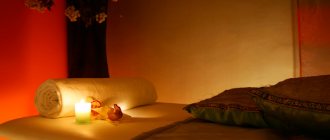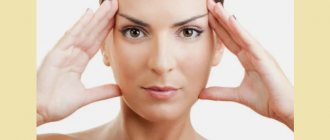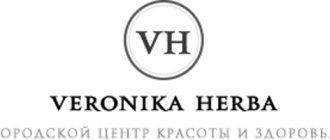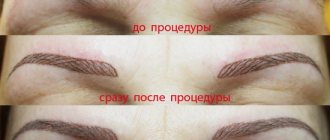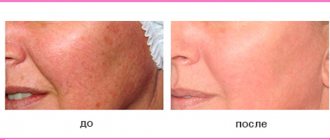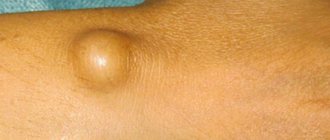M22 is a modern laser device that allows you to correct aesthetic problems and is used for medicinal purposes. The M22 device is a multi-module platform that combines a number of effective technologies that have different effects on the skin and blood vessels.
Who is suitable for M22 procedures? The device effectively combats a wide range of problems associated with skin inflammation and rashes, uneven skin tone and texture, pigmentation, photoaging and vascular changes. In addition, the functionality of the device allows it to remove black and brown tattoos, as well as unwanted vegetation.
The M22 is equipped with several laser modules (IPL, ResurFX, Nd:YAG and Q-Switched Nd:YAG), each of which has a different effect and solves specific groups of problems. Each module has a continuous contact cooling system, thanks to which the procedures are painless and safe.
How does photorejuvenation work?
The essence of this rejuvenation method is based on the action of a special cosmetology device that creates a light beam of a certain frequency. The specialist independently adjusts the wavelength of radiation, depending on the condition of the patient’s skin.
There are several methods and types of photorejuvenation. The doctor selects individually which device can best cope with the patient’s skin problems.
- Laser photorejuvenation is considered one of the most effective; a neodymium laser is used here.
- IPL – this technique uses fairly intense pulses of light. The skin is exposed to frequent flashes of radiation of a given intensity.
- Elos photo-rejuvenation - a device is used here that combines electro- and photo-rejuvenation of the face; it emits light of electrical origin.
- Collagen photorejuvenation is performed using collagen lamps. Unlike elos rejuvenation, they affect the skin with light rays of a certain length.
Photorejuvenation helps patients with various skin problems. Indications for this type of rejuvenation include:
- dark spots;
- expression wrinkles;
- gray skin tone;
- signs of skin aging: sagging, sagging tissue, the appearance of jowls and a double chin;
- rosacea;
- enlarged and contaminated pores;
- increased skin oiliness.
The photorejuvenation procedure takes place in several stages. In order for the patient to be calm and know what will be done with him, it is worth knowing in advance how this type of rejuvenation is carried out.
1. Cleansing the skin and applying gel for cooling and better contact between the skin and the light pulse;
2. The patient wears special glasses to protect his eyes;
3. The rejuvenation procedure itself begins, the specialist applies the device to the treatment area and a photo flash is fired, with rays of a certain length. So the doctor goes around each area on the face. The procedure itself lasts from 15 to 60 minutes, depending on the area being treated.
4. At the end of the session, the doctor treats the skin with an anti-inflammatory and hypoallergenic gel, which helps soothe the skin and maintain the effect of the procedure.
As a rule, redness is visible on the skin immediately after the procedure. However, it goes away after a few hours. Thus, the rehabilitation period after each procedure is quite short. But visible changes can be noticed within 10-14 days after the first visit to the doctor. According to patient reviews, they noticed that, unlike conventional anti-aging procedures, after the first visit to photorejuvenation, the skin becomes smoother, tightened, and small wrinkles are smoothed out. The doctor decides how many photorejuvenation sessions are required. He assesses the condition of the skin, looks at the reaction after the procedures and calculates how many visits will be necessary. Plus, the patient himself notices a significant difference in the condition of his skin.
Each patient should familiarize themselves with the contraindications before undergoing one or another photorejuvenation procedure. And inform your doctor about their presence. So, photorejuvenation is not performed when:
- the presence of tumors in the body;
- hypertension;
- pregnancy;
- blood diseases;
- inflammatory processes on the skin;
- diabetes mellitus;
- presence of pacemakers;
- diseases of the thyroid gland.
The essence of phototherapy technology
A lot of people are not aware of the essence of photorejuvenation. Many people know that prolonged exposure to the sun is fraught with accelerated aging and other problems. This type of aging is called photoaging, and it can be reversed. But what does rejuvenation with the help of light waves have to do with it? There seems to be a contradiction. But sunlight consists of the following types of radiation:
- ultraviolet - 10%;
- visible light - 40%;
- infrared light - 50%.
Sunlight combines different types of radiation
Important ! From this list, only ultraviolet light is harmful to the skin.
For photorejuvenation, broadband intense pulsed light (IPL) is used. There is no UV. IPL is a quantum flux that is supplied in separate beams - 2-6 per flash. Wavelengths of 400-1400 nm are used here.
Here are the general components of an IPL device:
- a handpiece containing a xenon lamp;
- sapphire or quartz filter;
- digital display;
- cooling system.
Phototherapy apparatus
Laser rejuvenation: what is it?
Modern developments by scientists in the field of skin rejuvenation have made it possible to make a big breakthrough. Rejuvenation is becoming safer and faster, as evidenced by the results of laser rejuvenation procedures using a fractional CO2 laser.
The essence of this technique is selective influence. The beams form a laser lattice, the radiation evaporates small areas of the skin. Each of the finest rays creates a depression in the skin, a fraction, to a certain depth. There is a uniform alternation of evaporated zones with untouched ones. In turn, the areas that remain untouched have a healing effect on the damaged areas. By contracting and regenerating, they create a good lifting effect.
.
There are several varieties of this procedure. Laser rejuvenation can be performed using two methods:
— Ablative is a targeted laser effect that evaporates the upper cells of the epidermis, penetrating a maximum of 1.5 mm under the skin. During the procedure, superficial areas of the skin are removed. This method is best suited for the first signs of aging.
- Non-ablative - this method, on the contrary, has a deeper effect on the skin. The beam can penetrate to a depth of 5 mm. Thus, the laser helps cells build a new membrane frame and renew themselves from the inside. All processes are activated, the production of collagen and elastin. This solves the problems of skin aging and visible changes, tightens the oval of the face and improves skin color. The skin receives maximum healing and rejuvenating effect, both from the inside and outside.
Indications for laser facial rejuvenation include:
- acne and post-acne;
- significant photoaging of the skin;
- deep expression wrinkles;
- poor skin condition;
- sagging and sagging;
- pigmentation;
- enlarged pores.
The whole procedure is divided into several important stages, which should include:
1. Makeup removal and pain relief in areas of particular sensitivity.
2. After 20 minutes, when the skin is no longer sensitive, the doctor begins laser treatment. The session can last up to 60 minutes. The exact amount of time depends on the scope of work and zones.
3. After laser treatment, the doctor applies products with dexpanthenol to the skin for speedy healing and tissue restoration. In the first two hours after the procedure, swelling, pain and redness are observed in the treated areas.
Redness and swelling may persist for 2 days. Next, crusts will appear on the skin; they can last from 3 to 10 days, depending on the depth of the effect. Experts recommend lubricating the skin well with soothing agents: Bepanten, Panthenol, D-panthenol, as well as creams with hyaluronic acid. In 2-3 weeks the crusts will disappear and you can sign up for a new procedure.
Typically, a laser rejuvenation course consists of 3-5 sessions, depending on the problems the patient has addressed. Three months after the last procedure, the maximum effect of rejuvenation can be observed. To maintain results, it is recommended to undergo 1-2 preventive procedures per year. Which will help against rapid skin aging and give minus 5-6 years.
Laser rejuvenation is considered the most gentle method, there are no side effects, and the rehabilitation period lasts only 7-10 days. Despite the accessibility and effectiveness of the procedure, anyone who wants to undergo laser rejuvenation should first familiarize themselves with the contraindications and be sure to notify the doctor about the presence of any ailments before starting the procedures.
So, laser rejuvenation is not recommended for:
- open skin diseases, including herpes;
- psoriasis, dermatosis;
- the presence of infections in the body;
- wounds at the treatment site;
- pregnancy and breastfeeding;
- immune diseases;
- diabetes mellitus;
- ischemic disease.
Why are some patients unhappy with the results of IPL therapy?
The only difference between these devices is power. At the same time, the package does not always contain all the necessary attachments, so salons need to purchase them in addition. And not all salons do this. Many people use no more than two. Moreover, salon staff often violate the procedure technique. So it turns out that many clients write negative reviews. Women pay a lot of money to become more beautiful, but they do not become more attractive.
Lack of power is one of the reasons for negative reviews
The reason is also the impatience of women themselves who want to quickly rejuvenate their facial skin. However, with this technique, the result appears later; moreover, it is strongest only one and a half to two months after completing the IPL course.
This period is required for the skin to improve its structure and collagen framework. First, the pigment spots darken, only then do they begin to peel off and lighten. If there is no awareness of this, a woman may end up disappointed.
Important ! Lack of information can cause another problem: too high expectations due to the fact that the masters sometimes do not conduct preliminary conversations.
It takes time to improve your skin condition
The specialist has the right to offer IPL only after the following actions:
- thorough inspection;
- identifying points that need to be corrected;
- informing the patient in detail about how the technique works;
- an explanation of how rehabilitation works;
- granting a license for the equipment and authority to use it.
Judging by the reviews, women do not have the slightest idea about what kind of procedure they were undergoing, what device they used, or how it was configured. In addition, “photorejuvenation” refers to procedures with lasers - elos, laser resurfacing, fractional laser exposure and others. And this is despite the fact that the laser itself is not used in real IPL.
Many procedures are associated with photorejuvenation, although they have nothing to do with it
So: a woman who decides to apply for such a service should ask questions without a shadow of hesitation. This is important in order to obtain maximum information about the procedure and the device used in it. The later the generation of the device, the better it is: they have a better cooling system. Thanks to this, impulses, even the most powerful ones, are easier to bear.
Important ! It is also important how worn the filters are.
It is necessary to find out from a specialist everything about the procedure.
Photorejuvenation or laser rejuvenation: which is better?
Let's summarize what to choose for rejuvenation: photo procedures or laser?
Photorejuvenation is suitable for patients aged 30 to 55 years. Ideally copes with age spots, dilated blood vessels and pores. Also good for removing fine and superficial wrinkles.
In contrast, laser rejuvenation is suitable for patients over 45-50 years old. Because laser copes better with deeper skin rejuvenation and has a pronounced lifting effect. Fractional CO2 lasers help remove moderate to deep expression lines.
Such procedures can easily replace both plastic surgery and other methods of rejuvenation and facelift.
However, to accurately determine which procedure is right for you, it is best to consult with a cosmetologist. At the Lazmed Clinic, both rejuvenation methods are used; our highly qualified doctors will be able to choose the best rejuvenation method for the individual characteristics of the skin.
Action mechanics
The energy comes in separate bundles, captured in the epidermis using special “targets”. Next, the “targets” are heated up and destroyed. In this case, the procedure does not affect neighboring tissues at all.
The targets are:
- pigment responsible for skin color;
- blood protein containing iron;
- photosensitive pigments;
- oxyhemoglobin;
- the rest of the protein.
Much can be affected by a photorejuvenation device
In this case, light waves can be up to 1400 nm. This impulse is absorbed by the “targets”, and their temperature becomes higher. What happens next is:
- Melanin is destroyed in the skin, which brightens it. This eliminates pigmentation. Elastin and collagen are destroyed and their molecules are recycled. As a result, the pores become narrower, the color is healthier, the turgor is better;
- capillaries, with the exception of the larger ones, disappear, and even the latter become difficult to notice, and it becomes easier to cure vascular diseases. Connective tissue begins to grow at high speed, which leads to a higher rate of synthesis of hyaluronic acid, collagen, and also elastin.
Skin improves by destroying melanin and small capillaries
Important ! A clear indication for IPL is the skin's susceptibility to bacterial diseases. The procedures destroy harmful microflora, reducing acne.
But IPL is not a cure for all age-related changes. To eliminate many, it is necessary to look for other means and techniques.
The procedure may not always be effective
Patients' opinions
Diana , Norilsk
“I resorted to IPL at 37, I really wanted to no longer have pigment spots and nasolabial folds, and I also wanted to correct the contour of my face. The process was unpleasant, comparable to a burn. After that, I walked around with redness for almost an hour. But then the face tightened up, became noticeably lighter and younger. The spots then became quickly crumbling brown dust. And in order to notice the folds, now you need to look closely. Highly recommend! But the main thing here is not to become a victim of scammers.”
Elena , Moscow
“If you've passed half a century, you've probably started to develop age spots. Having heard about the IPL technique, I decided to collect as much information as possible on it: I studied reviews and photographs of patients, and a list of contraindications. The latter did not apply to me, so I tried the photorejuvenation procedure on myself. At the same time, I did carboxytherapy. And that’s it, the spots on my cheeks disappeared. Then she underwent an ultrasound of the skin. According to the doctor who examined the results, my skin has returned to normal.”
Women are satisfied with the procedure
Galina , Ivanovo
“My skin has always been problematic. Pimples and blackheads popped up constantly. Spots and scarring as a result were par for the course. With age, wrinkles began to appear. The doctor recommended photorejuvenation, which would get rid of all skin problems at once. At first I was worried. However, the master turned out to be experienced. The procedure did not cause much pain, and the burning sensation soon went away. After the very first procedure, there was a slight peeling left, but it was worth the money spent. Five sessions passed and the skin became completely healthy, without problems.”
Tatiana , Krasnodar
“The cosmetologist recommended photorejuvenation, and I underwent this procedure. The main disadvantage here is that you have to endure pain. I also learned about the existence of laser photorejuvenation. I'm thinking about trying this method. If your skin is highly sensitive, I would not advise you to undergo IPL therapy. But I’m happy with the result: I got rid of rosacea and excessive pigmentation, and my face also tightened up.”
The problems, according to women, went away quickly
Valentina , Vladivostok
“Personally, I was very satisfied with the IPL result. There was no pain, one might say. The former pigmentation was gone, my face regained clarity, and I looked seven years younger. Due to the fact that my skin is not highly sensitive, I did not see any side effects.”
Experts' opinion
According to doctors, IPL is a very effective technique without serious flaws. According to them, photorejuvenation allows you to avoid plastic surgery, while obtaining excellent results. However, more than half of the doctors add that it is better not to do IPL for a woman under 35 years of age.
According to some experts, the operating principle of IPL is based on a special type of non-polarized light radiation, with which it is possible to influence a considerable number of skin problems at a lower cost, and therefore a lower price for the patient, which, for example, laser therapy does not allow.
Experts believe that this procedure has many advantages.
Anna Avaliani, cosmetologist
“Before committing to the IPL, one must prepare. Thirty days before the procedure and fourteen after it, you need to spend as little time in the sun and heat as possible. For another month before the session, you should not use antibacterial drugs, retinoids and medications like Aspirin and Ibuprofen. Otherwise, complications are possible. The absence of a positive result may mean a medical error - using the wrong filter or a device that has exhausted its resource. And if the doctor does not have the proper experience, the appearance of burns, scars, and even worsening pigmentation cannot be ruled out.”
Experts agree with the benefits of the procedure
Alison Pontius, plastic surgeon
“It is commonplace for a person, having become a victim of the media, which advertised “magical rejuvenation,” to expect the IPL to throw off decades of their life. But this is impossible. This technique heals the skin, corrects it “little by little”, but does not give such a strong effect as many expect. To improve the result, it is necessary to combine IPL with other techniques at the discretion of the cosmetologist. But if this method is completely unsuccessful, you can go under the knife of a plastic surgeon.”
Photos before and after the procedure
Photos before and after a course of facial photorejuvenation procedures No. 1
Photos before and after a course of facial photorejuvenation procedures No. 2
Photos before and after a course of facial photorejuvenation procedures No. 3
Cost of the procedure
We will indicate the approximate cost of such a procedure in different cities of Russia.
| City | Approximate cost of one procedure (facial skin treatment) |
| Moscow | 5500 rub. |
| Saint Petersburg | 5000 rub. |
| Rostov-on-Don | 5000 rub. |
| Novosibirsk | 4000 rub. |
| Krasnoyarsk | 4000 rub. |
| Norilsk | 4500 rub. |
| Kaliningrad | 4000 rub. |
| Ufa | 4300 rub. |
| Orenburg | 4500 rub. |
| Vladivostok | 3900 rub. |
| Petropavlovsk-Kamchatsky | 4900 rub. |
When should IPL not be done?
This technique has the following contraindications:
- recent tanning;
- great dark complexion, phototype 4-5 according to Fitzpatrick;
- carrying a baby;
- lactation;
During lactation, the procedure is prohibited. - mechanical damage to the skin in the area that is planned to be treated;
- active herpes;
- photodermatosis;
- using products that increase photosensitivity;
- tendency of the skin to develop keloid scars.
If you are predisposed to the occurrence of keloid scars, the procedure is not performed
Important ! If there is a tendency to herpetic rashes, preventive procedures are performed seven days before the session. This will prevent exacerbation of the disease.
It is necessary to draw up a photorejuvenation plan in advance. This includes:
- studying reviews;
- conversations with people who have undergone the procedure;
- searching for a quality clinic and an experienced doctor.
In this case, the doctor must be experienced enough so that he can be completely trusted.
You need to trust a good doctor

